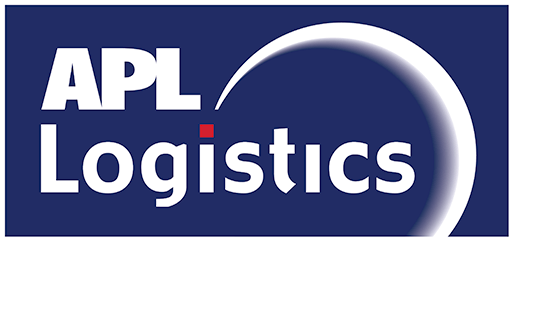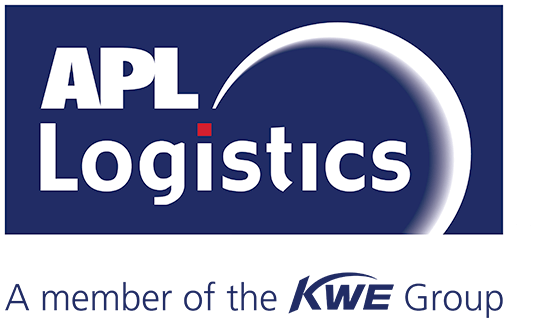August 27, 2025 in Articles
Transforming Supply Chain Risk into Competitive Advantage
By David Knodle, APL Logistics
Companies are turning disruption into opportunity by unlocking strategic supply chain value through resilience, technology, and smarter decision-making.
Global disruptions have forced organizations to reassess the resilience of their supply chains. Many companies have shifted focus toward improving margins, favoring strategies that balance cost efficiency and competitive strength. At the same time, businesses are strengthening their operations to anticipate and respond more effectively to future disruptions.
Supply chains have evolved far beyond mere operational necessities — today they are recognized as strategic assets. Companies that manage their margins effectively and align their supply chain with business objectives gain a substantial competitive advantage. In this context, resilience means not just surviving disruptions but thriving – and using them to drive value through cost control and risk mitigation. The better a business performs, the greater its resilience.
Organizations seeking both resilience and efficiency are collaborating with external experts to identify gaps and uncover opportunities within their supply chains. This proactive approach highlights the strategic value of a reliable third-party logistics (3PL) partner. From APL Logistics’ perspective, strategic value means delivering exceptional service at the lowest cost while safeguarding our customers’ financial health.
Defining strategic value in the supply chain
Strategic value is more than efficiency alone — it’s enabling the businesses to thrive under pressure. This trifecta—Cost, Revenue, and Risk— is the foundation of supply chain performance.
- Cost: Delivering superior service while minimizing costs.
- Revenue: Protecting margins by effectively balancing cost with revenue.
- Risk: Ensuring financial stability through effective risk management.
Unlocking Strategic Value
A. Digital Transformation
Digital transformation is often touted as the future of logistics, but its true value lies in scalability, agility, and customization. McKinsey reports that an estimated 86% of companies recently surveyed are investing in supply chain transformation to respond to industry disruptions. It is predicted that 50% of supply chain organizations will invest in AI-based analytics to improve inventory management and forecast demand.
Companies not fully embracing digital opportunities risk missing substantial productivity gains. For instance, based on an Accenture report, generative AI can transform up to 43% of supply chain tasks, and automation can reshape 39-58% of roles within operationally intensive industries such as manufacturing, retail, and construction. However, following strong growth between 2020 and 2023, investment momentum is slowing down.
While technology providers may overuse the term, meaningful advancements — such as real-time data visibility and adaptive planning tools — provide genuine strategic benefits. Here is where an experienced logistics partner can simplify the integration of new technologies and help businesses stay focused on smarter decision-making rather than unnecessary complexity.
B. Supplier Collaboration and Risk Management
Supplier reliability remains a major concern. Research by Deloitte and Manufacturers Alliance shows that 43% of executives are concerned about supplier disruptions that can cost companies as much as 45% of their annual profits over a decade. This highlights the need for proactive risk management, supported by strong supplier relationships and transparent communication. Businesses that establish trust with suppliers are able to respond quickly without compromising performance.
C. Data-Driven Decision Making
Businesses struggle with accurate demand forecasting, the majority of companies still face costly overstocks and shortages. Real-time data and continuous planning enable organizations to adapt quickly in response to market changes. Unlike static Business Continuity Plans (BCP), dynamic order planning enables rapid responses and proactive risk mitigation through predictive scenario modelling – rather than relying on outdated contingency plans.
Digital twin technology could be the answer for businesses looking to move beyond continual reassessment of their supply chains. To successfully navigate supply chain uncertainties, there is a need for meticulous order management, accurate forecasting, scenario simulations, and seamless integration of demand and supply processes.
Solutions such as APL Logistics’ Order Pilot combine advanced machine learning technology with industry-leading expertise to deliver precise, proactive order management capabilities. By leveraging predictive analytics and scenario-based planning, businesses can become more responsive, effectively manage fluctuations in supply and demand, identify potential bottlenecks, and strategically adjust their operations to mitigate risks – before executing.
D. Talent Development and Organizational Alignment
Strategic value is also dependent on people — when everyone in the organization understands the endgame. According to a McKinsey survey, 90% of supply chain leaders see talent gaps as a main barrier to digitization. To close this gap, organizations need clear alignment around shared objectives, breaking silos and fostering cross-departmental collaboration. Constant measurement of performance across regions and teams strengthens outcomes and sustains supply chain resilience.
E. Sustainability and ESG Integration
Though not the central focus of this article, resilience and strategic value inherently go hand-in-hand with sustainability. Efficient and agile supply chains reduce waste, lower emissions, and align seamlessly with the Environmental, Social, and Governance (ESG) objectives.
Overcoming key challenges
Progress is often slowed by departmental silos, conflicting priorities, and slow decision-making. Traditional Business Continuity Plans (BCP) rarely work effectively amid disruption. The solution is to adopt a logistics and supply chain maturity model that embeds responsiveness and alignment into everyday operations, ensuring the supply chain can adapt in real-time.
Conclusion
Unlocking value within the supply chain is an ongoing process that extends beyond traditional planning and forecasting. It demands continuous adaptability, an embedded culture of resilience, and intelligent use of technology. Organizations that recognize their supply chain as a strategic asset can not only withstand disruptions but also use it as a springboard to drive growth and innovation.
Importantly, resilience does not necessarily need to come at a premium. Aligning people, processes, and technology alongside the right third-party logistics (3PL) partner, supply chains can become powerful engines of efficiency, agility, and experience long-term success. In today’s complex and ever-evolving marketplace, proactive supply chain management is an imperative. Now is the time to act – unlock the strategic potential of your supply chain and turn challenges into opportunities for lasting success.


